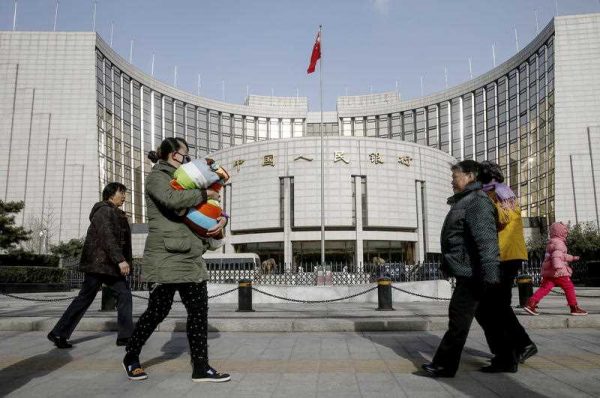Recently, the Chinese currency has repeatedly tested the weak side of its daily trading band, despite attempts by the People’s Bank of China (PBoC) to signal a steadier bilateral renminbi-US dollar rate via its daily fixing.
What has led to the changing fortunes of the renminbi? What lies ahead for the currency in 2015?
There are several possible factors leading to the most recent bout of weakness in the renminbi–US dollar rate.
The most obvious culprit is the broad strength of the US dollar. Since the start of 2014, both the euro and yen have weakened by 15 per cent against the dollar. Consequently, the ‘redback’ has also weakened slightly against the almighty ‘greenback’, although the renminbi is still outperforming most other currencies. According to Bank of International Settlements (BIS) statistics, the renminbi gained some 7 per cent in effective (currency weighted) terms in 2014.
Monetary policy divergence between China and the US is another factor. Whereas the US Federal Reserve is expected to start raising its policy rate and has stopped further unconventional (net) bond buying, the PB0C has embarked on a cycle of monetary easing. Hence the anticipated interest rate differential between the two currencies is narrowing.
There is now some debate about underlying currency valuation. Over the past decade, the renminbi has gained 50 per cent on a broad real effective basis. Even allowing for fast Chinese productivity growth, there are questions about whether the renminbi is fairly valued or even overvalued. The once broad-based market consensus of an undervalued renminbi is gone.
Market participants have also become worried about a seemingly more stressed Chinese financial system. As the exchange rate is one of the most important financial asset prices, how can one expect an ever-stronger renminbi on top of a more fragile Chinese financial sector? It makes little sense to dread Chinese shadow banking and to preach meaningful renminbi appreciation at the same time.
Finally, the PBoC appears to have taken a more hands-off approach towards managing the redback. Since early 2014, it has intervened less in the foreign exchange market and widened the daily trading band. A growing offshore renminbi market also means risk sentiment playing a bigger role in renminbi exchange rate dynamics. The offshore renminbi turnover is likely to have more than doubled in the past two years.
A mighty US dollar, monetary policy divergence, currency valuation concerns, and less PBoC intervention all combine to sway currency expectations, raise volatility and narrow interest rate differentials. Thus the implied Sharpe ratio — which measures risk in investment portfolios — declines, prompting an increase in Chinese corporate hedging of dollar liabilities, with rising dollar deposits and a more rapid extinguishing of Chinese corporate dollar debts. Added to demand for US dollars have been the growing overseas acquisitions by Chinese companies.
In balance-of-payments terms, the fourth quarter of 2014 saw the largest Chinese capital outflow in 16 years, and official foreign exchange reserves have fallen steadily since mid-2014, though this is in part due to valuation effects. In short, Chinese demand for US dollars has risen, weakening the renminbi-US dollar exchange rate.
What will happen next? It depends a lot on how the PBoC responds to Chinese corporate dollar buying. There are three possibilities.
The PBoC could cling more tightly to the dollar peg, just like it did in the 2008 Global Financial Crisis. The result will be a deflationary blow to the Chinese economy in an environment of persistent dollar strength, a ‘PBoC put’ on the renminbi instilled into market expectations and brief sense of stability. In this case, a looser dollar peg could re-tighten.
The PBoC could take a laissez faire approach, stepping back from the currency market to let it clear itself. This would result in sharp volatility and even corporate stress. In this case, the loose dollar peg could vanish fast.
A third and more likely scenario would be for the PBoC to let the renminbi move more freely against the dollar but prepare to lean against the wind by selling dollars out of its official reserves from time to time. In this case, the loose dollar peg would start fading gradually.
This last approach makes sense for a number of reasons. In the short term, it would help deliver a warranted Chinese monetary easing by helping to stabilise the effective exchange rate and an orderly unwinding of the Chinese corporate carry trade. In the longer term, it would help enhance two-way currency flexibility ahead of fuller interest rate deregulation and greater capital account liberalisation.
This 20-year old dollar peg has served the Chinese economy well, but its time is up. As the biggest trading nation and second largest economy, China is too big to be anchored to any single currency, even in a loose fashion. A dollar peg has often amplified external shocks to the Chinese economy because of the dollar’s safe haven role. Although the US no longer welcomes the Chinese peg to its currency, it continues to demand nothing but ‘one-direction flexibility’.
It’s high time that the People’s Bank of China let the dollar peg go.
Dr Guonan Ma is a visiting research fellow at Bruegel and was formerly senior economist at the Bank for International Settlements, Hong Kong. An earlier version of this piece was published here by the Financial Times.

